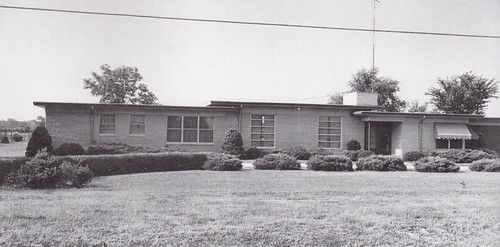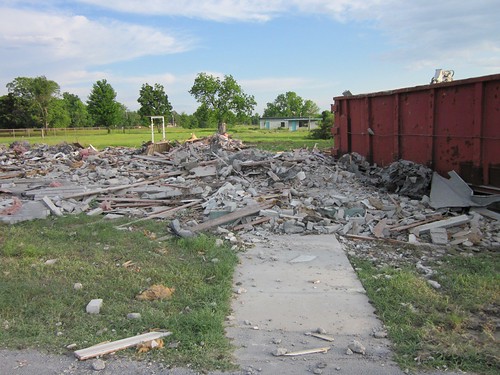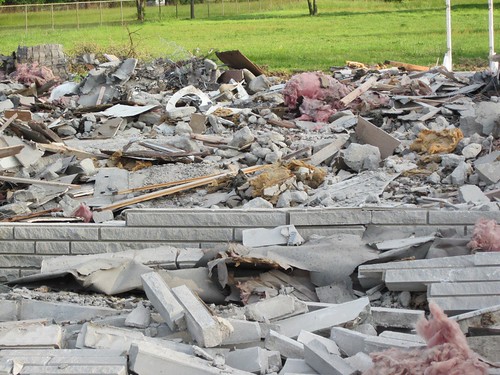In the mid-20th century, Frank Lloyd Wright invented the concept of “Usonian” houses, which were based on the utopian ideals of simplicity, economy, and convenience. The first step in constructing a Usonian house was to lay down a concrete platform with cast-in heating pipes. Next came a grouping of brick supporting screens, creating a chain of linked boxes. The brick supports were topped by a series of flat concrete roofs, with a higher roof over the living-dining area and lower ones over the bedrooms and bath. The difference in roof heights allowed extra light to come in through clerestory window strips. Light also streamed in through floor to ceiling windows, usually overlooking a garden or pool.
One of these Usonian designs was built on the outskirts of Joplin, ¼ mile west of Stone’s Corner on Highway 171. Joplin architect Robert Braeckel adapted Wright’s plans to construct this ultra-modern dwelling for Stewart and Naomi Ruth Stanley in 1950. All steel construction supported Carthage limestone walls and large expanses of glass. Copper tubing built into the floor provided radiant heat. The ultimate in modern living, the house also featured a pool and bathhouse.
Unfortunately, I had to use past tense in my description; the house was demolished May 3, 2012. It is ironic as well since May is National Historic Preservation Month. This month’s Preservation Magazine devotes the entire issue to Frank Lloyd Wright architecture and the efforts to preserve it.
This piece was adapted from Leslie Simpson’s “Little House on the Prairie” that was published in Joplin Souvenir Album, G. Bradley Publishing, 2001. Photographs courtesy of Leslie Simpson and the Post Memorial Art Reference Library.
Leslie Simpson, an expert on Joplin history and architecture, is the director of the Post Memorial Art Reference Library, located within the Joplin Public Library. She is the author of From Lincoln Logs to Lego Blocks: How Joplin Was Built, Now and Then and Again: Joplin Historic Architecture. and Joplin: A Postcard History.





